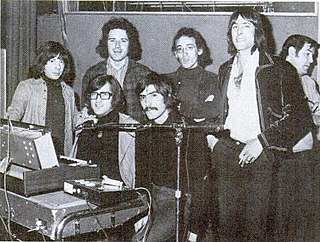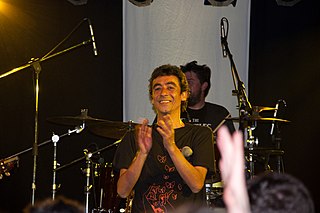
Flamenco is an art form based on the various folkloric music traditions of southern Spain, developed within the gitano subculture of the region of Andalusia, and also having historical presence in Extremadura and Murcia. In a wider sense, the term is used to refer to a variety of both contemporary and traditional musical styles typical of southern Spain. Flamenco is closely associated to the gitanos of the Romani ethnicity who have contributed significantly to its origination and professionalization. However, its style is uniquely Andalusian and flamenco artists have historically included Spaniards of both gitano and non-gitano heritage.

In Spain, music has a long history. It has played an important role in the development of Western music, and has greatly influenced Latin American music. Spanish music is often associated with traditional styles such as flamenco and classical guitar. While these forms of music are common, there are many different traditional musical and dance styles across the regions. For example, music from the north-west regions is heavily reliant on bagpipes, the jota is widespread in the centre and north of the country, and flamenco originated in the south. Spanish music played a notable part in the early developments of western classical music, from the 15th through the early 17th century. The breadth of musical innovation can be seen in composers like Tomás Luis de Victoria, styles like the zarzuela of Spanish opera, the ballet of Manuel de Falla, and the classical guitar music of Francisco Tárrega. Nowadays commercial pop music dominates.
The Music of Andalusia encompasses a range of traditional and modern musical genres which originate in the territory of Andalusia in southern Spain. The most famous are copla and flamenco, the latter being sometimes used as a portmanteau term for various regional musical traditions within Andalusia. Today, Andalusia has a rich and thriving musical scene, which draws from its own musical traditions as well as from external influences such as salsa, jazz or pop music.
New flamenco or flamenco fusion is a musical genre that was born in Spain, starting in the 1980s. It combines flamenco guitar virtuosity and traditional flamenco music with musical fusion.
Spanish rock is the term used for the variety of rock music produced in Spain. Most bands formed in Spain have sung in Spanish, but many others have sung in English, French and Italian, in addition to the other languages spoken in Spain, such as Catalan, Galician, Basque, Aragonese, and Asturian.

Gibraltar is a British overseas territory with many musical influences. Rock based music is undergoing a renaissance with a multitude of local bands playing original material and covers. Local venues have begun accepting Gibraltarian bands and those from nearby Spain, resulting in a varied mix of live performances every weekend as well as some weekday nights.
Al-Andalus Ensemble is a husband and wife musical duo that performs contemporary Andalusian music. The ensemble features Tarik Banzi playing oud, ney and darbuka, and Julia Banzi on flamenco guitar.

The Andalusian cadence is a term adopted from flamenco music for a chord progression comprising four chords descending stepwise – a iv–III–II–I progression with respect to the Phrygian mode or i–VII–VI–V progression with respect to the Aeolian mode (minor). It is otherwise known as the minor descending tetrachord. Traceable back to the Renaissance, its effective sonorities made it one of the most popular progressions in classical music.
Cante jondo is a vocal style in flamenco, an unspoiled form of Andalusian folk music. The name means "deep song" in Spanish, with hondo ("deep") spelled with J as a form of eye dialect, because traditional Andalusian pronunciation has retained an aspirated H lost in other forms of Spanish.

Rock en español is a term used to refer to any kind of rock music featuring Spanish vocals. Compared to English-speaking bands, very few acts reached worldwide success or between Spanish-speaking countries due to a lack of promotion. Despite rock en español's origins in the late 1950s, many rock acts achieved at best nationwide fame until the Internet consolidated the listeners. However, some rock en español artists did become internationally popular with the help of a promotional campaign from the mid-1980s to the mid-1990s called "Rock en tu idioma". Some specific rock-based styles influenced by folkloric rhythms have also developed in these regions. Some of the more prominent styles are Latin rock ; Latin alternative, an alternative rock scene that blended a Latin sound with other genres like Caribbean ska, reggae, and soca; or Andalusian rock, a flamenco-influenced style that emerged in Spain.

A flamenco guitar is a guitar similar to a classical guitar but with thinner tops and less internal bracing. It usually has nylon strings, like the classical guitar, but it generally possesses a livelier, more gritty sound compared to the classical guitar. It is used in toque, the guitar-playing part of the art of flamenco.

Pata Negra is a Spanish flamenco-blues band, established by brothers Raimundo Amador and Rafael Amador after the breakup of their previous band Veneno. Their style of derivative rhythms based on flamenco nuevo and blues, which they titled "blueslería", made an impact on other modern flamenco music bands. The Amador brothers as Pata Negra, recorded five records between 1978 and 1989.

Triana was a rock band hailing from Andalusia, Spain. Formed in 1974, the band were known for blending elements of progressive rock and flamenco music to make a style known as Andalusian rock or flamenco rock.

La leyenda del tiempo is the tenth album by Spanish flamenco singer Camarón de la Isla, and the first one not to feature his long-time collaborator, guitarist Paco de Lucía. It is regarded as a turning point in the history of flamenco, contributing to the popularization of nuevo flamenco. A commercial failure due to its departure from traditional flamenco, which "scandalised purists", the album has received widespread critical acclaim.
The cante flamenco, meaning "flamenco singing", is one of the three main components of flamenco, along with toque and baile (dance). Because the dancer is front and center in a flamenco performance, foreigners often assume the dance is the most important aspect of the art form — in fact, it is the cante which is the heart and soul of the genre. A cante singer is a cantaor or cantaora.
Gualberto García Pérez is a Spanish musician regarded as a pioneer of the flamenco fusion, also called Andalusian rock.

Venezuelan rock is rock music from Venezuela, the most common being based on Rock en Español.

José María López Sanfeliu, better known by his stage name Kiko Veneno, is a Spanish musician.

Tomás Moreno Romero, better known as Tomasito, is a Spanish flamenco dancer, singer and rapper born in Jerez de la Frontera, Spain, in 1969. His music style is a very personal mixture of flamenco, pop, rock, hip hop, funky, and other rhythms. He is the son of Bastiana, also flamencodancer.

Chambao is a flamenco-electronic band originally from Málaga, Spain, active in its first period from 2002 to 2018 and with a return announced for 2023. They're known for a Flamenco Chill sound that fuses flamenco sounds and palos with electronic music. The name of the band is taken from an improvised form of beach tent that is constructed as a means of sheltering from the wind and sun.












